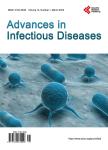The Epidemiological, Clinical, Paraclinical and Prognostic Aspects of Severe Malaria at the Regional Hospital of Thies
The Epidemiological, Clinical, Paraclinical and Prognostic Aspects of Severe Malaria at the Regional Hospital of Thies作者机构:Department of Health Thies University Thies Senegal Internal Medicine Department Thies Regional Hospital Center Thies Senegal Infectious and Tropical Diseases Department Fann Teaching University Hospital Dakar Senegal
出 版 物:《Advances in Infectious Diseases》 (传染病进展(英文))
年 卷 期:2018年第8卷第3期
页 面:162-171页
学科分类:1002[医学-临床医学] 100214[医学-肿瘤学] 10[医学]
主 题:Malaria Severe Malaria Quinine ACT
摘 要:Introduction: Malaria, the first parasitical endemic disease in the world, is a serious disease with 407,000 deaths in Africa in 2016. It is the main cause of morbidity and mortality in Senegal [1] [2]. Methods: Our retrospective study carried out from 1st January 2010 to 31 December 2013, at the department of internal medicine in the regional hospital of Thies was aimed at studying the epidemiological, clinical, paraclinical and prognostic profile of severe malaria in the autochthonous adults with 15 years and more. Results: Over this 3-year period, 57 patients were hospitalized in 1275 patients due to severe malaria that is to say a hospital prevalence of 4.47%. The average age was 64.21. A clear male predominance has been observed, around 61% (34/57) against 39% (23/57) with a sex ratio of 1.6. The highest malarial infestation rate was found at the end of the rainy season and at the beginning of the dry season (September to November). The clinical picture which predominates is the neurological affection which represented 33.3% of the cases. The different aspects of this neurological affection were of coma type, convulsion and prostration in 87%;21.7% and 8.6% respectively. The cerebral malaria was associated or not with other symptoms of severity that are anemia in 41.6%;icterus was represented in 21% of the cases, cardio-vascular collapse in 15.8% and hypoglycemia in 5.5% of the cases. The complications were observed during the hospitalization in 73.6% of the cases with the type of bacterial pneumonia (47.6%) and urinary infections (26.2%). The curative treatment was based on quinine salts through intravenous track in 100% of the case with a shift to the Artemisinin combination therapy (ACT) associated with intense care measures. In our study the whole lethality is 17%. Conclusion: The results of our study shows that the severe forms of malaria are still affecting our tropical endemic area, in spite of the prevention efforts made to fight against this plague. Th



